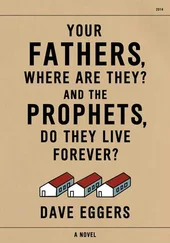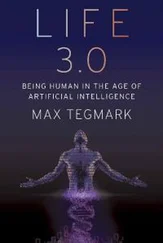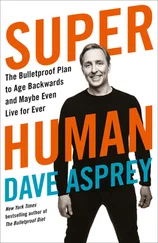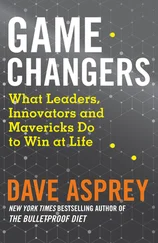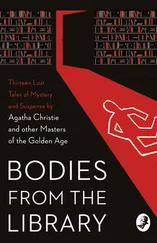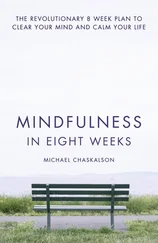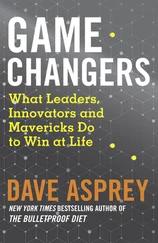1 ...8 9 10 12 13 14 ...23 First, let’s take a closer look at each of the aging pathways and how they affect us.
PILLAR 1—SHRINKING TISSUES
When you are young, your body has a multitude of stem cells—undifferentiated cells that are capable of giving rise to many more cells of the same type. When cells die via apoptosis, your stem cells spring into action to replace them. As you age, however, a few things happen. Your stem cell reserves dwindle, your stem cells themselves age and thus become less efficient at replacing dead cells, and your mitochondria may not trigger apoptosis at the right times. Some cells die before they’re supposed to. Others aren’t quickly replaced. As a result, tissues throughout your body lose more and more cells and begin to atrophy, or break down.
Quick, picture a stereotypical “old person.” In your mind’s eye you probably see a frail person with loose skin, no muscle tone, shaky hands, and a foggy memory—right? The truth is that these things happen as we age and cells die and are not replaced. In fact, loss of muscle tissue is so common that it has its own name, sarcopenia , a condition that can lead to falls and broken bones and even impairs the body from fully recovering after those tumbles (or a surgery). 1In most people, sarcopenia sets in as early as age thirty and gets worse with each passing decade. 2
When neurons in the brain die and your body isn’t able to replace them, your brain literally shrinks. And yes, this typically happens as we age. This contributes to cognitive decline and dementia, as well as a decrease in fine motor skills. In particular, when that neuron loss takes place in the hippocampus—the part of the brain that controls emotion, memory, and the nervous system—you begin to look and sound a lot like that old person you just imagined. Since hippocampal atrophy is so common, the size of your hippocampus is considered a key marker of aging. 3But there is nothing normal about it—at least, there shouldn’t be.
So the big question becomes, What can you do to make sure those dead cells get replaced (or don’t die in the first place)?
It turns out that if you keep your mitochondria healthy, you can avoid a lot of unnecessary cell loss. The biggest game changer here is eating foods that boost the efficiency of your mitochondria so they can make more energy and your body has the raw goods it needs to manufacture all the proteins, hormones, and fatty acids they require to function. We’ll cover those foods in the next chapter.
It is possible to reverse atrophy by taking advantage of stem cell therapy—a medical treatment in which stem cells are injected into your body. I’ve had more stem cell treatments than probably anyone on Earth (more on this later), and it’s been a game changer for me. I went from having chemical-toxin-induced brain damage as a young man to having a hippocampal volume that’s in the 87th percentile for someone my age. But stem cell therapy does not come cheaply or easily, so it’s better to prevent atrophy in the first place!
The key to success with any of these interventions is to start them now, even if you don’t think you need them. After all, humans are good at avoiding things that hurt. You don’t step on nails or burn yourself because you feel the impact of those cuts immediately. But when it comes to aging, you’re the proverbial frog in a pot of slowly heating water. You keep taking the hits because you don’t feel the impact right away. But cutting down on just a few of those hits by making small changes in your environment can really ramp up what’s possible for you. Perfection not required.
PILLAR 2—MITOCHONDRIAL MUTATIONS
Mitochondrial mutations—aka damaged mitochondria—are the second pillar of aging. The importance of this aging pathway cannot be overstated. When the power plants of your cells—the very things that create the energy that keeps you alive—start mutating, is it any wonder everything goes haywire?
Unfortunately, this is a cause of aging that is often overlooked. Even those on the forefront of biotechnology have been so focused over the past several decades on mapping the human genome that they have paid little attention to mutations in mitochondrial DNA. Don’t get me wrong—the sequencing of the human genome changed the world, and I’m grateful for the scientists who accomplished this monumental task. But unless you have a significant genetic disorder, it turns out that the human genome is not usually of great value in predicting how you’ll age compared to your mitochondrial DNA status.
You can think of your genetic code as the building plans for your body—but who wants a body that doesn’t have any energy? (Hint: That’s called death.) Remember, your mitochondrial genome is separate from your human genome—mitochondria evolved from bacteria and have their own genetic code. But your mitochondrial DNA serves a very important function—it controls how your body makes energy. Unfortunately, your mitochondrial DNA is a lot more susceptible to mutations than your human DNA because mitochondrial DNA has a limited ability to repair itself when it is damaged. So you’re going to want to take fewer hits to your mitochondria.
Think of it like this: Your DNA provides a picture of how a building (your body) will look—how many rooms, how many windows, what kind of roof, how tall, etc. Your mitochondrial DNA describes what kind of wiring, heating, lighting, and air conditioning will be in the building. The building itself is going to be there for a while, but if the wiring goes bad, the air conditioner breaks, and the bulbs burn out, it’s not going to be a building you want to live in. Mitochondrial DNA breaks and mutates easily, which is why it’s so important.
When it comes to aging, it’s helpful to look at epigenetics, the science of how the environment in and around our bodies influences genetic expression, and how these changes are passed down from generation to generation. A 2018 review from leading stem cell researchers found that mitochondrial epigenetic mechanisms influence cell fate, cell division, cell cycle, physiological homeostasis, and even pathologies. 4In other words, your ancestors’ environment controls the mitochondria in your cells. And of course problems with those important cell functions can lead to every one of the Four Killers.
As you read in chapter 1, mitochondrial DNA can become damaged when excess free radicals are present. Damage to mitochondrial DNA from free radicals causes deletions in the mitochondria’s genetic code. The damaged mitochondria produce energy inefficiently, generating huge amounts of additional free radicals and less of the energy that you would rather put toward your Super Human efforts. And as we know, damaged mitochondria generate inflammation and accelerate aging throughout the body.
Remember, this cycle all started with an excess of free radicals, which are created by … dysfunctional mitochondria! So the more efficient your mitochondria, the less likely you are to suffer damage to your mitochondrial DNA, regardless of the genetic code you inherited from your parents. This is one of many reasons my anti-aging protocol focuses so heavily on making sure my mitochondria are running like rock stars for the long term.
PILLAR 3—ZOMBIE CELLS
Death-resistant cells, aka senescent cells, are cells that won’t die when they’re worn out, and they are a major focus of anti-aging research today. These cells no longer divide or function properly. These cells literally become dead weight. They do not function, yet they persist and secrete inflammatory proteins, causing all the problems that stem from chronic inflammation, 5including an increased risk of the Four Killers. Even worse, the mitochondria in senescent cells become dysfunctional and release huge amounts of reactive oxygen species. This is called senescence-associated mitochondrial dysfunction (SAMD), and it will age your body very quickly. 6
Читать дальше

